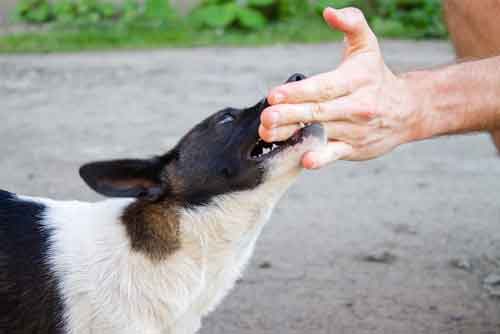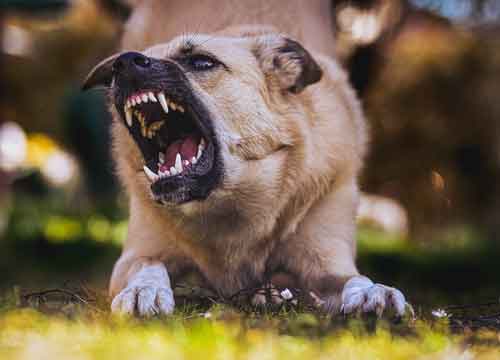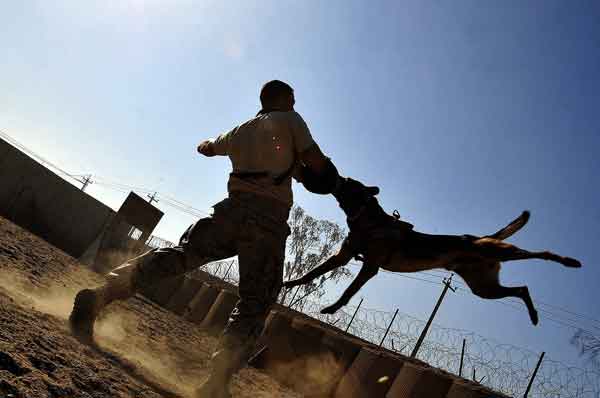Dog bites can be a terrifying and traumatic experience. Whether you’re a dog owner or simply encountering a dog in your neighborhood, knowing how to handle the situation is crucial if you find yourself on the receiving end of a bite.
The physical and emotional consequences of a dog bite can be severe, but following these six must-know steps can increase your chances of a successful recovery.
1. Ensure Safety and Remove Yourself from Immediate Danger
Ensuring safety and removing oneself from immediate danger is the first and most crucial step to take after experiencing a dog bite incident.
When faced with an aggressive dog, it’s important to prioritize personal safety above all else. This includes taking steps to distance oneself from the dog and minimize the risk of further harm.
After a dog bite, one must carefully assess the situation and determine the best course of action. It’s essential to remain calm and avoid making sudden movements that may provoke the dog further. Slowly backing away from the dog without turning your back on it can help create distance and reduce the threat. If possible, finding a barrier such as a car, tree, or fence to put between oneself and the dog can provide additional protection.
By ensuring safety and removing oneself from immediate danger, individuals can minimize the risk of further bites or injuries while seeking appropriate medical attention and reporting the incident to the necessary authorities.

2. Assess the Severity of the Bite
Once you are safe, assessing the bite’s severity is crucial. It helps determine the appropriate steps to take after an incident.
Dog bites can range from mild to severe, with some requiring immediate medical attention. Look for signs of a deep puncture wound, excessive bleeding, or damage to nerves, tendons, or bones.
It’s worth noting that each dog bite case is unique, and the severity of the bite may vary. Therefore, a Connecticut dog bite attorney advises individuals who have experienced a dog bite that it’s important to document any injuries sustained in a dog bite incident and keep records of all medical treatments received. This documentation can be important if you decide to take legal action against the dog’s owner.
Seeking medical attention is also extremely important, even if the bite seems minor. Dog bites can cause serious infections such as tetanus and rabies, which can be life-threatening if left untreated.
3. Cleanse and Bandage the Wound
After experiencing a dog bite incident, cleansing and bandaging the wound is a critical step in preventing infection and promoting healing.
The first step is to rinse the wound under running water to remove any dirt or debris that may have entered the wound during the bite. This gentle flushing helps clean the area and reduce the risk of infection.
Once the wound is rinsed, it’s important to cleanse it with mild soap and warm water. Carefully wash around the wound, being cautious not to scrub too vigorously as it may further irritate the area. After cleansing, pat the wound dry with a clean towel to remove excess moisture.
Applying an over-the-counter topical antibiotic ointment can further protect the wound from infection. Finally, cover the wound with a sterile bandage to shield it from further contamination and aid in healing.
Properly cleansing and bandaging the wound after a dog bite not only reduces the risk of infection but also provides a barrier against dirt and bacteria. It’s important to note that if the wound is deep or severe, it’s advisable to seek medical attention for professional assessment and treatment.
Additionally, following up with a healthcare professional ensures proper wound care and monitoring.
4. Seek Medical Attention
Seeking medical attention is a crucial step that should not be overlooked after experiencing a dog bite incident. Even if the wound appears minor, it’s important to remember that dog bites can lead to serious complications such as infection, tissue damage, or nerve injury. Seeking prompt medical care ensures proper assessment, treatment, and monitoring of the wound.
When seeking medical attention after a dog bite, it’s advisable to visit a healthcare professional such as a doctor or urgent care clinic. They can evaluate the severity of the wound, assess the risk of infection, and determine the appropriate course of action.
Depending on the nature of the bite, medical professionals may recommend cleaning the wound more thoroughly, administering antibiotics to prevent infection, and updating tetanus vaccinations if necessary. In some cases, they may also refer the individual to a specialist for further evaluation or treatment.
5. Report the Incident
Reporting the dog bite incident is a crucial step that helps ensure the safety of others and holds responsible parties accountable.
After experiencing a dog bite, it’s important to report the incident to the appropriate authorities, such as animal control or local law enforcement. By reporting the incident, individuals provide valuable information that can help track and monitor aggressive dogs in the community, preventing further incidents.
When reporting a dog bite, it’s important to provide as much detail as possible, including the date, time, and location of the incident, as well as a description of the dog and any identifying information about the owner. This information helps authorities investigate the incident and take appropriate action to prevent future harm.
Reporting the incident also assists in documenting cases of dangerous dogs, which can be helpful if legal action needs to be taken or if there are concerns about the dog’s behavior in the future.
6. Document and Gather Evidence
Documenting the dog bite incident and gathering evidence is crucial, especially if legal action becomes necessary.
Take photos of your injuries immediately after the incident and throughout the healing process. Collect contact information from any witnesses who saw the incident unfold. Keep track of all communication with the dog’s owner, including dates, times, and details of conversations.
It’s also important not to wash or dispose of any clothing or personal items that may have been damaged during the incident, as they may serve as evidence in the future.

In conclusion, knowing how to navigate the aftermath of a dog bite incident is essential for your safety and well-being.
By following these six must-know steps – ensuring safety, assessing the severity of the bite, cleansing and bandaging the wound, seeking medical attention, reporting the incident, and documenting and gathering evidence – you can increase your chances of a successful recovery.
Remember, if you have any concerns or questions, it’s always best to consult with a healthcare professional or legal expert for guidance tailored to your specific situation.

